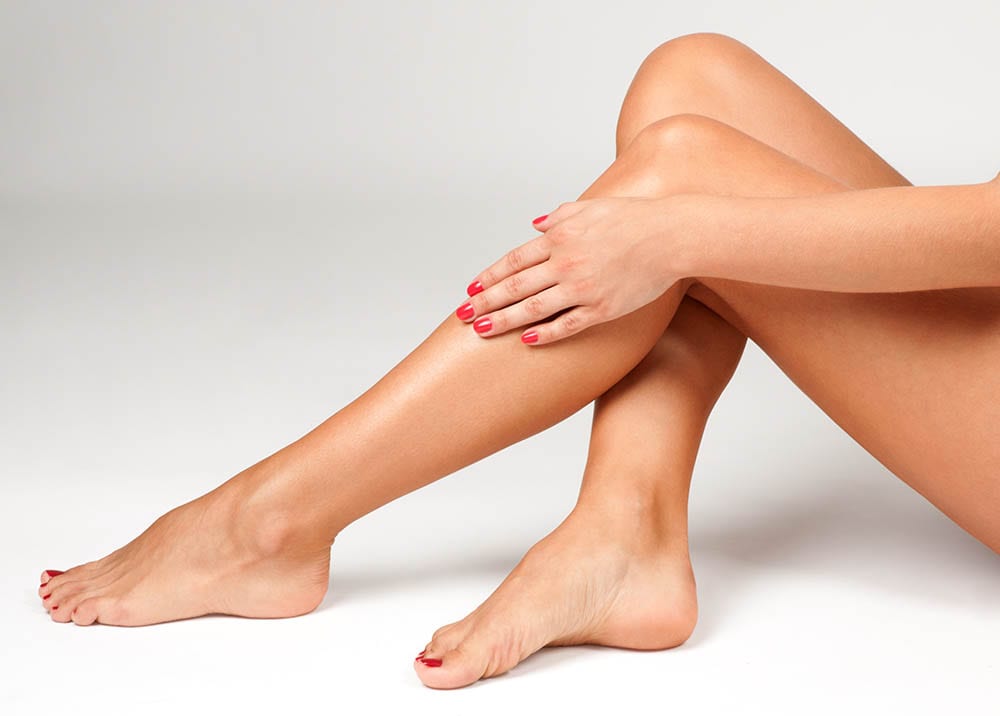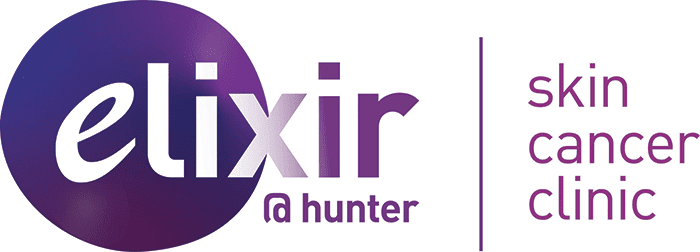
Vascular Laser
An effective Laser treatment for spider veins, redness, facial flushing and rosacea.


Vascular Laser treatment Maitland
Vascular lesions treatment (Long pulse Nd:YAG 1064nm Laser and IPL)
The 1064 Nd laser is highly effective in targeting blood vessels beneath the skin, making it an excellent choice for treating visible vessels and vascular malformations. This long-pulse laser is particularly useful for addressing capillaries, spider veins, spider angiomas, and cherry angiomas on both the face and body. It works by delivering a brief pulse of light and heat to the skin, which seals and eliminates the visible part of the blood vessel. The laser safely passes through the skin and targets red blood cells, heating them up and damaging the vessel, causing it to collapse and eventually disappear. The treatment is quick, with cooling applied throughout to minimize discomfort.
Facial redness treatment with laser and IPL
The Nd laser is highly effective in reducing redness, facial flushing, and clearing angiomas and prominent veins, offering a safe and efficient solution.

Spider Veins Treatment
Both IPL (Intense Pulsed Light) and the Nd 1064 nm laser are suitable for treating spider veins on the face and body, but they are not recommended for varicose veins in the legs, which require a stronger vascular laser and specialized treatment at vein clinics. IPL is particularly beneficial for treating larger areas of skin, such as those affected by general redness or rosacea, thanks to its wider treatment window. It can treat multiple fine vessels simultaneously. After an initial IPL session, smaller capillaries can be targeted with the Nd YAG laser to further enhance the results. Depending on the pressure from deeper vessels, the vessels and vascular problems may not clear completely in one treatment, and it may take 1-3 sessions to improve.
FAQ’s
- What causes cherry angiomas?
- Who gets cherry angiomas?
- What do cherry angiomas look like?
- How do you prevent cherry angiomas?
- Can you have a cherry angioma in your teens or 20s?
- Are cherry angiomas normal?
- How many cherry angiomas are normal?
- Can cherry angiomas grow?
- Are cherry angiomas contagious?
- Are cherry angiomas flat?
- Are cherry angiomas dangerous?
- Can cherry angiomas bleed?
- How are cherry angiomas treated?
- How many laser treatments will I need to remove the cherry angioma?
- Can cherry angiomas be treated with cream?
- What causes rosacea?
- How is rosacea treated?
- What are some general measures to treat facial redness and rosacea?
- What causes prominent veins and capillaries?
- Can broken capillaries or prominent veins heal on their own?
- Can broken capillaries bleed?
- Can broken capillaries on the face be treated?
- Can broken capillaries and prominent veins fade?
- Why do broken capillaries and prominent veins on the face occur?
- What causes broken capillaries on the nose?
- Are broken capillaries on the face permanent?
- Are broken capillaries rosacea?
- Are broken capillaries dangerous?
- Are broken capillaries the same as spider veins?
- Are telangiectasia broken capillaries?
- Does alcohol make broken capillaries worse?
Cherry angiomas, also known as red spots or Campbell de Morgan spots, are benign harmless, but permanent overgrowth of skin blood vessels. They tend to increase in size and number with age, and often have no cause. One study showed 75% of people at the age of 75 have at least 1. Occasionally, they can be secondary to hormonal changes.
They are typically not a cause for concern unless they are changing size, shape, or are bleeding frequently. If this occurs see your local doctor for an assessment.
They are very common in all races and ages. They become more common with age.
They are often small bright red circular or oval structures that can range from a pinhead to half a cm in size. They may be flat, raised, red, blue, or varying shades of purple. If they become thrombosed (blood clots within them), they may appear black.
Any changing or black lesion should be evaluated by a doctor.
There is no known way to prevent cherry angiomas from growing.
While they are more common in older age, they are normal in teens and those in their 20s.
Yes. Most people will have at least one cherry angioma on their body at some point in their lives.
There is no determined normal number of cherry angiomas. Some people have one, some have hundreds.
What is not normal is if you have increasing numbers appearing. This should prompt you to visit your doctor for assessment.
Yes. They can tend to slowly grow over time. Some, however, may form then stay the same size.
No. Cherry angiomas are not contagious.
Whilst most are slightly raised. There are some cherry angiomas that are flat. All cherry angiomas will start off flat when they are developing.
True cherry angiomas present on the skin are not dangerous. However, as with any new skin lesion, these should be checked by your doctor
Yes. Although uncommon, If exposed to trauma they may bleed.
These red spots are easily removed with IPL. Treatments take up to 5 minutes and may require 2-3 treatment sessions to remove the red spot completely. There is no downtime, and we can remove every red spot on your body during the same session, although we do suggest limiting treatments to 50 spots maximum in one sitting. Other options you may read about include:
- Cryotherapy- not recommended as they are very likely to scar
- Electrocautery- this is often not required unless in a hair-bearing area such as the scalp
- Cut out with scalpel- not recommended unless rapidly growing/changing
In most cases only one treatment is necessary. Larger stubborn cherry angiomas may require 3-5 sessions. This is uncommon.
No, cherry angiomas will not go away with cream.
Rosacea is the result of chronic skin inflammation, usually over the cheeks, nose, and chin. There are multiple factors usually involved including:
- Genetics
- Reaction to Demodex mite- mite that lives on the skin
- Foods
- Alcohol
- Sunlight
- Strenuous exercise
- Corticosteroids
Treatment of Rosacea is often multi-dimensional depending on the severity of the condition. General principles of Rosacea treatment include:
- Avoiding triggers of facial flushing
- Avoid irritant or oily skincare products
- Application of sunscreen
- Avoid steroid creams as this will worsen rosacea
- Keep the face cool to reduce flushing
Topical rosacea creams or oral tetracycline antibiotics may be prescribed by your cosmetic physician during your complimentary consultation. These can be very useful in the treatment of rosacea. Our laser treatments include the Intense Pulsed Light in treating Rosacea. These are very effective treatments and work well in combination with our prescription cream range.
When starting your treatment regimen to reduce redness/rosacea and facial flushing you may find the following general measures helpful:
- Avoid oil-based facial creams and make-ups.
- Avoid lengthy, hot showers.
- Never apply topical steroids to the area. This only provides a short-term improvement at the expense of a long-term worsening.
- Use sun protection daily.
- Reduce intake of alcohol and spicy foods.
- Avoid hot environments (e.g. Bikram yoga/sauna’s etc.).
- Apply simple moisturisers.
Also known as Telangiectasias or broken capillaries, prominent veins result from broken blood vessels becoming visible on the surface of the skin. They are usually caused by excessive sun exposure, corticosteroid creams, and skin trauma. There are rarer causes that your Cosmetic Physician will assess you for at your complimentary consultation.
No, once damaged these veins remain enlarged and visible to the naked eye. These need to be treated with laser therapies. Creams help to treat the underlying cause, but will not remove veins and capillaries already enlarged and damaged.
Yes, as capillaries enlarge they are prone to rupturing and bleeding. Particularly when exposed to trauma. This is usually seen as a bruise under the skin, or occasionally outright bleeding.
Yes. Our laser therapists will direct you to the latest technologies to remove your broken capillaries with the least discomfort and quickest results.
There is no downtime and minimal pain associated with this type of laser treatment. Treatments take less than 5 minutes.
They are unlikely to fade on their own. However, fading or even complete removal is very possible with our gold standard laser technologies.
These capillaries and veins were always there. The reason you can now see them is that they have become enlarged.
Enlargement of capillaries and veins occurs for a variety of reasons, each requires its own unique treatment regimen to ensure there are no worsening/new capillaries forming.
Regardless of the reason for enlargement, laser or IPL therapy is the most effective method for removal.
The area around the base of the nose where the nostril meets the cheek is a common area for broken capillaries. This is a thin area of skin where capillaries are quite close to the surface and easily visible when they enlarge.
These are comfortably treated with our variety of laser devices.
If left untreated, yes.
Fortunately, these can be easily removed with our laser therapies.
Yes. Rosacea can cause larger visible broken capillaries, along with smaller prominent capillaries that can present as a diffuse redness across the usual rosacea-prone areas (chin, cheeks, forehead and nose).
These are most often benign cosmetic concerns. Rarely are they associated with an underlying medical condition. It is important you have any skin change checked by a doctor.
At Elixir Hunter, all doctors are experienced in checking prominent veins and capillaries to ensure they are safely removed and not any more than a cosmetic concern.
Yes. Spider veins are a form of broken capillary.
Yes. There are many terms to describe dilated veins and capillaries. They include:
- Spider veins
- Broken capillaries
- Telangiectasiea
- Spider Nevi (usually has a specific cause)
- Prominent veins.
Alcohol can increase the appearance of broken capillaries owing to its ability to dilate blood vessels. Often people notice their redness and capillaries appear more prominent when drinking alcohol.
